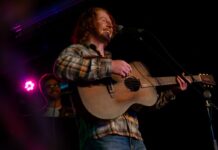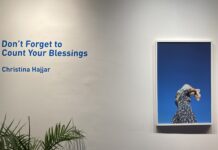On Sept. 1, Locavore, a bronze sculpture created by artist Mary Anne Barkhouse, was officially unveiled on Carleton’s campus in front of Paterson Hall.
The sculpture, which features a snowshoe hare and a Western coyote, is “supposed to be a consideration of what our perception is of wilderness and the natural order of things, and that there should be a respect for how that order evolved,” Barkhouse said.
Locavore is located in the quad in front of the library, which Barkhouse says is a fantastic location because it represents people having their way of cataloging information and nature having its own way.
Barkhouse was born in Vancouver and belongs to the Kwakiutl First Nation community. The notion of stewardship and care of land has been very present in her upbringing, and she said has always loved creating things—both two- and three-dimensional—ever since she was born.
Primarily a sculptor, her artwork is included in public collections such as the National Gallery of Canada, Mackenzie Art Gallery, and in venues such as the Canadian Museum of History, Western University, and McMaster Museum of Art.
Nature is Barkhouse’s main source of inspiration, and she has access to it right at her fingertips.
“I have all kinds of animals that regularly pass through my backyard, and I’m inspired just by looking out my back window,” she said.
Barkhouse said the goal of her art is to “provoke thought about how important and luxurious and beautiful our environment in Canada and the avocation of luxury and importance in nature.”
Although Barkhouse creates the sculptures on her own, she said it takes a whole crew to get her artwork installed, and the community of people she works with is very important.
Locavore was purchased by Carleton in 2015. Carleton president Roseann Runte and director of the Carleton University Art Gallery Sandra Dyck, as well as a larger group of people, helped with the process of getting the sculpture to become a permanent installation on campus.
Barkhouse said she loves doing public art, as opposed to having her work in galleries or museums, because of the accessibility it has. “There are a lot of people that don’t go to museums or galleries. If you have your work out in the open, that’s an opportunity for me to engage in a conversation in a way,” she said.
The inspiration behind Locavore was the learning process and how it never stops.
“It’s important to have an open mind to challenge things that you know, and to preserve that open mindedness, to not have a narrow view of the world and to challenge yourself,” Barkhouse said.





